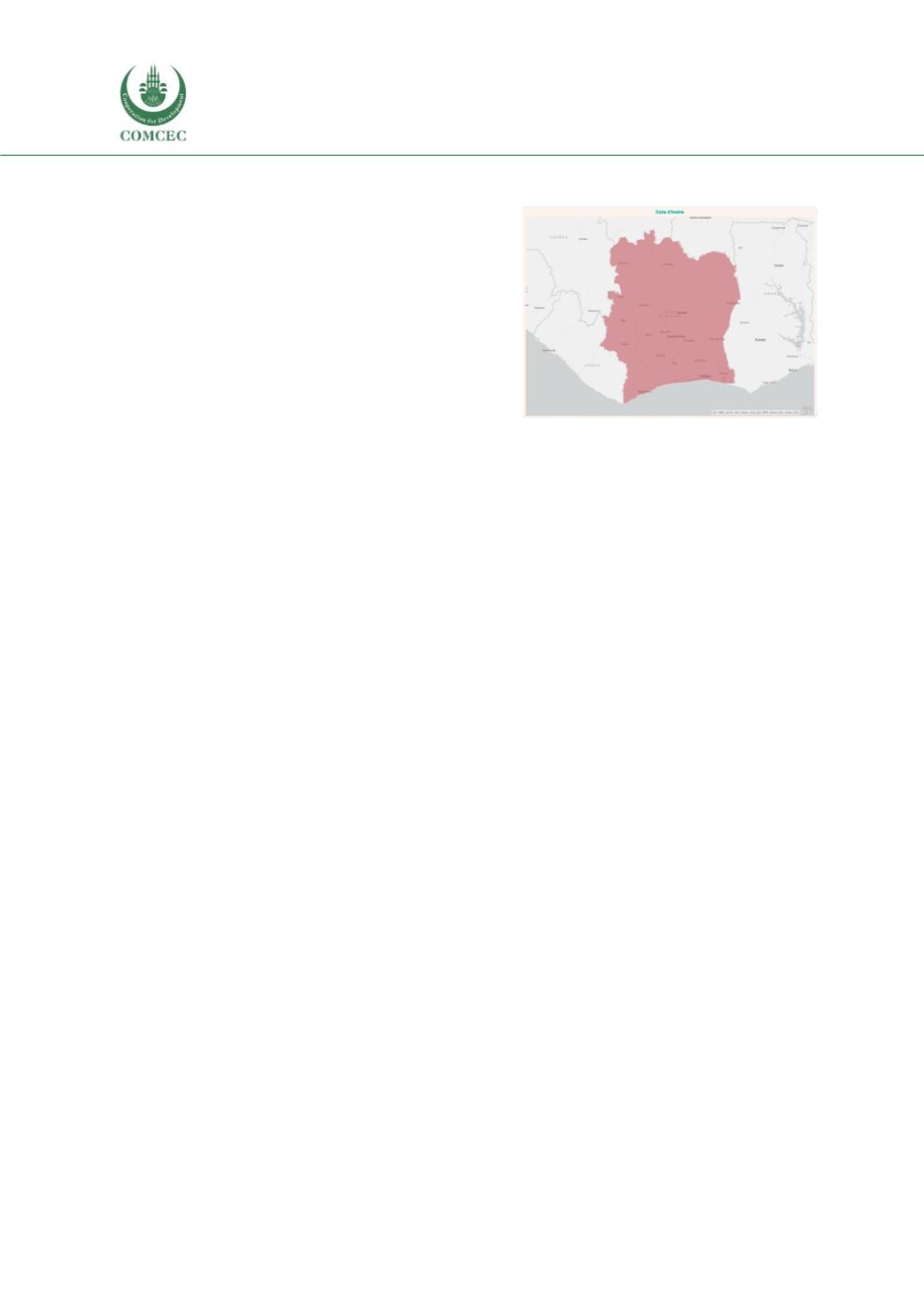

Child and Maternal Mortality
in Islamic Countries
102
3.3. Côte d'Ivoire
The Republic of Cote d'Ivoire is in the Western Africa
region, surrounded by Burkina Faso, Mali, Liberia,
Guinea, Ghana and the Gulf of Guinea. The country was
ranked 170 out of 189 countries in the 2017 Human
Development Index. In 2014, the total population of
the country was approximately 22.7 million, of whom
49.8% lived in rural areas and 48.3% were women.
Women of childbearing age represent 24% of the
population. The population is very young with 41.8%
aged 0-14 years. Côte d'Ivoire has a high rate of
immigration at 24.2% of the total population.
The adult literacy rate among the female population
15+ years slightly decreased from 38.6% in 2000 to 36.8% in 2014. The use of modern
contraceptives remains relatively low, despite ongoing efforts to increase demand for family
planning and access to contraceptives. According to the 2018 Performance Monitoring and
Accountability 2020 (PMA2020) data, it was estimated that 25.0%of women use contraceptives
to space or limit births and 21.0 %use a modern method. The Total Fertility Rate, or the average
number of children per woman over the course of her lifetime, is declining but remains high: it
reduced from 6.6 children in 1990 to 5.1 children per woman in 2015.
Côte d'Ivoire has the fourth-highest GDP (1,538$) per capita in the West African Economic and
Monetary Union's (ECOWAS) region, and represent more than 40% of the region's GDP. In Côte
d'Ivoire, there is a strong commitment for SDGs at different levels of the state (including the
Head of state). This commitment resulted in the inclusion of the SDGs in the Ivory Coast National
Development Plan (2016-2020).
3.3.1. Maternal and child mortality in Côte d'Ivoire
The country has made little progress in combating maternal mortality, from 745 in 1990 to 645
deaths per 100,000 live births in 2015, an improvement of 13.4% in 25 years compared to 44%
worldwide (during the same period). The trends MMR estimates based by the IHME/GBD Group
are shown Figure 2.1. The newly released MMEIG/WHO estimate (September 19, 2019) shows
MMR of 617 in Cote d’Ivoire for 2017.
Only two rounds of the DHS Surveys were conducted in 1998-99 and 2011-12 in Cote d’Ivoire.
We show below the trends and differentials in U5MR and NNMR by urban-rural residence,
education of women and household wealth quintile. Both U5MR and NNMR reduced
significantly in Cote d’Ivoire between 1998-99 and 2011-12 (Figure 3.46). The reduction of
U5MR and NNMR was more pronounced in rural areas (Figure 3.47 and 3.48, respectively),
which helped in reducing large disparities between urban and rural areas. Very high under-5
mortality rates also were reduced among women with no or primary level of education, but
remained stagnated among women with secondary and higher level of education (Figure 3.49).
Large inequity in U5MR and NNMR by wealth quintile was also reduced between 1998-99 and
2011-12 (Figure 3.50) but the risk of child mortality remained high in Cote d’Ivoire.
Created with Microsoft BI
















